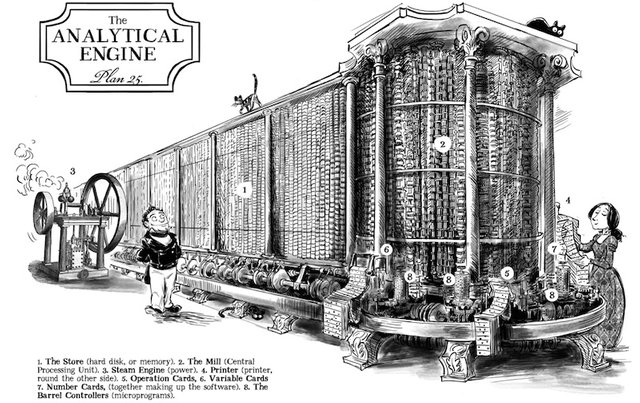History of Science & Tech #4: Ada Lovelace and The Analytical Engine
Charles Babbage, the man whose ideas were centuries ahead of his time. Two ideas of his in particular were truly remarkable, The Difference Engine, a sort of calculator, and The Analytical Engine, a machine that has a remarkable resemblance to a modern day computer and this was in the 19th century! Today we going to focus on The Analytical Engine and 'the Wonder Woman of computer science', Ada Lovelace, who was a key factor in the design of the Analytical Engine.

Ada Lovelace
Born in London in the year 1815, Ada Lovelace was a truly gifted woman. At an early age Ada Lovelace began showing a talent when it came to handling numbers. Her mother began hiring tutors to come and teach her math and science, these were not subjects that women were typically associated with at the time, but her mother insisted. Ada Lovelace excelled in mathematics and she was fascinated by the work of Charles Babbage. The two met when Ada Lovelace was 17, Babbage took her under his wing and mentored her through her days at the University of London where she studied advanced mathematics. When Babbage was working on The Analytical Engine, he came across a French article that explained the machine. Babbage asked Ada Lovelace to translate the article, and while translating the article, she decided to put in her own ideas for The Analytical Engine. She described how there can be specific codes for the machine so that it can handle letters and symbols along with what it was designed for, numbers. She also spoke about a way that The Analytical Engine could repeat a series of instructions, which computer programmers today call 'loops'. Her work with The Analytical Engine and some of her other work earned her titles such as 'the first programmer' and 'the Wonder Woman of computer science'.
The Analytical Engine
After designing The Difference Engine and realising that it was too complicated to build, Charles Babbage decided that he should go ahead and design something even more complicated! With the help of Ada Lovelace, the designs for The Analytical Engine are incredible. It was designed to calculate extremely complex mathematical problems, but it had the potential for so much more. Aside from The Analytical Engine needing hundreds of metal poles and it being the size of a steam train, the functionalities of The Analytical Engine are remarkably similar to the functionalities of a modern computer. It had a 'store' where recent results were kept, like the memory of computer. It had a 'mill' where the arithmetic processors were done, like the CPU of a computer. Even though The Analytical Engine was never built, people believe that it would have been able to perform functions like conditional branching, looping, microprogramming, parallel processing, latching, polling and so much more!

Charles Babbage and Ada Lovelace never got to build The Analytical Engine, and because of this, their work was never appreciated as much as it should've been. However, their amazing work has imprinted their names in the history of technology forever.
If you would like to read about Charles Babbage and The Difference Engine, you can check out one of my earlier posts here.
Thanks for reading!

References:
https://www.biography.com/people/ada-lovelace-20825323
http://sydneypadua.com/2dgoggles/the-marvellous-analytical-engine-how-it-works/
http://www.computerhistory.org/babbage/engines/
Check this out! ) https://steemit.com/history/@crazy-daisy/the-first-programmer-was-a-woman-the-story-of-ada-lovelace